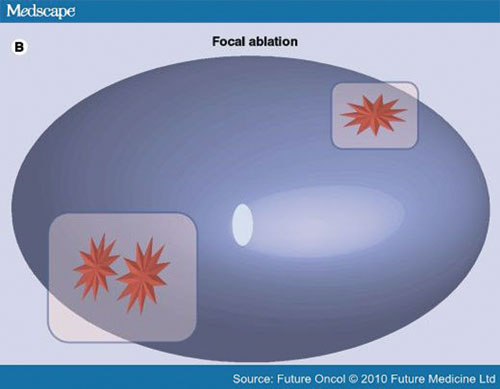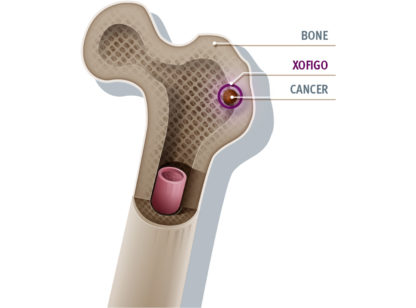Benign prostatic hyperplasia, or BPH, is a very common condition in which the prostate enlarges as men get older. Over 70% of men in their 60s have symptoms of BPH which affect more than 500 million men worldwide!1 While BPH is a benign (non-cancerous) condition, it can cause loss of productivity and sleep, depression and decreased quality of life.
It is common for men with BPH to experience symptoms such as:
- A frequent need to urinate both day and night
- Weak or slow urinary stream
- A sense that you cannot completely empty your bladder
- Difficulty or delay in starting urination
- Urgent feeling of needing to urinate
- A urinary stream that stops and starts
Many men who experience mild symptoms may choose to do nothing, or “watchfully wait.” However, the prostate gland does continue to grow over time, so seeking treatment with a urologist is a likely event.
Treatment options for BPH range from medications to surgery, with minimally invasive options in between. It is important to consult with your physician to know which option is best for you.
Medications
Your doctor may prescribe medications to manage your symptoms. These medications include alpha blockers which relax the muscles around the neck of your bladder, making it easier to urinate, and alpha reductase inhibitors which act to shrink the prostate. While medications can be helpful in relieving symptoms for some men, patients must continue taking them long-term to maintain the effects.
Some patients may suffer side-effects including dizziness, headaches, or sexual dysfunction. Some may not get adequate relief of their symptoms. Over 17% of men on medication for BPH discontinue treatment early for reasons such as being dissatisfied with side-effects or not getting adequate symptom relief.2
Thermotherapies
Thermotherapies are minimally invasive treatments where heat energy such as microwave or radiofrequency is applied to destroy prostate tissue. Less invasive than TURP (the surgery described below), these treatments are generally safe, can be performed under local anesthesia and provide moderate symptom relief for some patients.
Applying high heat to the prostate can cause tissue swelling and uncomfortable urinary symptoms during the healing period. Symptom relief does not occur immediately, and patients often need to have a catheter that is attached to a urine bag inserted into their bladder during the recovery period.
Transurethral Resection of the Prostate (TURP)
TURP is the most common surgery to treat BPH. During this procedure, patients undergo general anesthesia, and prostate tissue is removed. TURP is often considered the “gold standard” for long-term results.
After prostate tissue has been removed, the body needs time to heal. The remaining prostate tissue may actually swell and become inflamed before the desired shrinking effect occurs. Patients may suffer an uncomfortable recovery period that includes short-term problems such as bleeding, infection, erectile dysfunction, and urinary incontinence. Patients have to have a catheter that is attached to a urine bag inserted into their bladder for several days after the procedure. Symptom relief may not occur immediately, but lasts for a long time in many patients once it does occur. There can be long-term side effects after TURP such as dry orgasm (retrograde ejaculation), erectile dysfunction or incontinence (leaking of urine).
Laser Resection of the Prostate
TURP may be performed with a laser in procedures called photoselective vaporization of the prostate (PVP) or holmium laser enucleation (HOLEP). Laser therapy lessens the bleeding risks of traditional TURP. However, since prostate tissue is still removed, there can be tissue swelling and an uncomfortable healing time. Typically, a catheter has to be inserted into the bladder after the procedure.
New Technology for BPH
In 2013, the FDA cleared the UroLift® System, a new and minimally invasive procedure to treat an enlarged prostate. It is a simple procedure that does not require any cutting, heating or removal of prostate tissue.
The UroLift procedure is performed by a urologist and can be done in an office setting or in the hospital. The urologist uses the UroLift device to lift and move the enlarged prostate tissue out of the way so it no longer blocks the urethra (the passageway that urine flows through). Tiny implants are placed to hold the tissue in place, like tiebacks on a window curtain. The UroLift device is removed, leaving an unobstructed urethra for urine to flow normally again.
In my practice, I have found the UroLift System procedure to be a safe and simple treatment option that offers rapid symptom relief for men suffering from BPH. Unique benefits of this treatment option as documented in the Journal of Urology are that it can be done in the office setting; typically does not require an overnight stay or catheter use post-procedure; requires no cutting, heating or removal of prostate tissue and preserves sexual function.3
Numerous clinical studies involving hundreds of patients worldwide have demonstrated that the UroLift procedure provides a similar level of symptom relief (compared with other BPH procedures), with fewer side effects.4 Most common adverse events reported include blood in the urine, painful or difficult urination, the urge to urinate, pelvic pain, and urge incontinence. Most symptoms were mild to moderate in severity and resolved within two to four weeks after the procedure.
The goal of any BPH treatment is to relieve symptoms so you can get back to your life and resume your daily activities. Patients who do not want to start or continue their BPH medication, or patients who do not want to undergo major surgery, may consider the UroLift procedure as an alternative. Your doctor will need to do a few simple examinations to determine if you are a candidate for the procedure based on your specific symptoms and anatomy.
Dr. Walsh is a specialist in urology, treating a variety of conditions ranging from cancer of the genitourinary tract (kidney, prostate, bladder) to benign conditions including kidney stone, BPH, incontinence, bladder prolapse, and hematuria. He specializes in minimally invasive and robotic assisted laparoscopic surgery using the latest techniques to help his patients. For more information call (760) 346.7191or visit walshurology.com
References: 1) Berry, et al., J Urol 1984 and 2013 U.S. Census worldwide population estimates; 2) NeoTract US market model estimates for 2013 based on IMS Health and Drug Procedure Data; 3) Roehrborn, et al., Journal of Urology, L.I.F.T. Study, 2013; 4) Publications http://urolift.com/physicians/results/publications/











































Comments (0)